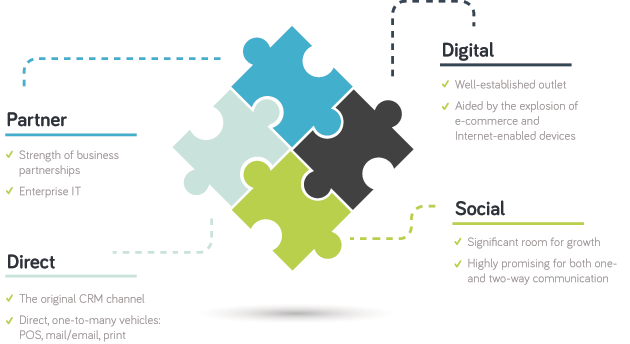“It is not the strongest of the species that survives, nor the most intelligent that survives; it is the one that is most adaptable to change.”
That is one of the most well-known “quotes” from Charles Darwin – even though it was never said or written by Darwin himself. The above quote, as proven in 2009, is actually a paraphrase of Darwin by an LSU professor in the 1960s that wrongly became attributed to Darwin. However, being a paraphrase, the quote still sheds light on Darwin’s thoughts regarding the ability of organisms to survive in particular environments.
Darwin knew, more than 150 years ago, that a species doesn’t necessarily have to be the strongest or the best in order to survive; he understood that it requires more of one’s adaptability/adjustment to surroundings than anything else.
That being said, most businesses soon learn to accept somewhat of a Darwinian approach to ensure the survival of their enterprise. It is rather simple: businesses must adapt to the technological changes developing around them, or they will be replaced by businesses that do. Executing effective customer relationship management (better known as CRM) yields no exception to this approach, especially as CRM continues to shift into a new era.
Present-day customer acquisition and retention commonly occurs in external channels (e.g., mobile and social). In these emerging channels, the company has much less control – as opposed to mass-media channels such as print, outdoor, radio and television – over how its message/brand is being perceived. While measuring the effectiveness of CRM via more traditional channels is relatively simple and straightforward, these new channels, operating outside of the company’s immediate control, pose significant issues in terms of metrics; in other words, organizational problems.
For clarity, CRM can be divided into four distinct domains: Partner, Direct, Digital and Social. This domain division allows companies to better organize and tailor channel solutions based on their specific business objectives. And because each domain encompasses a different functional IT that is organization-facing, it is much more effective at solving organizational issues than the communication-channel method through which consumer-facing CRM technology is coordinated.

The Four Domains:
-
The Partner domain focuses on the strength of business partnerships, specifically as such relate to enterprise IT.
-
The Direct domain represents the original CRM channel, and (as its name implies) it deals primarily with direct, one-to-many vehicles such as POS, mail/email and print – with the latter playing an increasingly supplemental role in contemporary times.
-
The Digital domain, aided by the explosion of e-commerce and Internet-enabled mobile devices, is already a well-established outlet in which businesses can systematically acquire and/or retain customers.
-
The Social domain, much less proven than its Digital counterpart, looks promising in certain contexts and certainly shows room for growth in regard to both one- and two-way CRM communication. However, the best practice for actually contextualizing social advertising is highly debatable and has yet to be proven.
Businesses face organizational problems that arise from emerging technologies, and this four-domain model has identified a solution to such problems. Analyzing each of the specific domains not only reveals their individual significance, but also showcases the importance of interactivity between the different domains. In most cases, the CRM issues caused by social and mobile communication channels can be resolved by simply combining the strategies and approaches used in both established and emerging domains. Consumers are already using a similar strategy for their purchasing habits, so it only makes sense for businesses to adapt accordingly.
About the Author
Eric Favaloro is the marketing copywriter at Comarch’s New York City office. Eric has extensive experience writing on a variety of different topics, including CRM, gamification and customer engagement.









Great Article. Enterprise needs more biological metaphors, business management is decades behind the new findings in the natural sciences.
The model is simple which means it must works. As a rule of thumb if a model can’t be written on the back of a napkin its useless since others won’t understand it.
“However, the best practice for actually contextualizing social advertising is highly debatable and has yet to be proven.”
You nailed it here. You can’t have best practice in social systems because contexts always shift. Best practice works in what is called “closed systems” which are very predictable, like manufacturing.
Social systems are open and highly contextualize. You need an expert able to adapt to context (like a doctor knowing subtleties in patients) which is called “good practice,” or apply the Lean Startup method of Eric Ries and learn from nearly scratch how to manage your community.
Great post.
Fantastic article! Is great to read the concept of Gamification as the natural evolution of CRM: at the end, both looks on how to engage your audience.